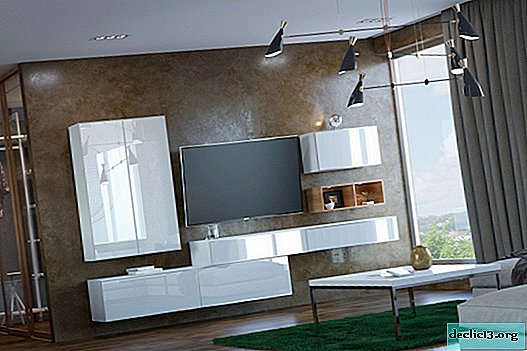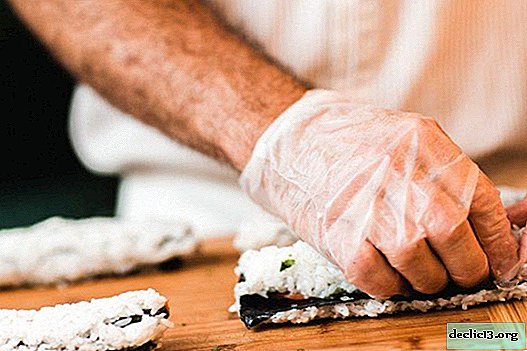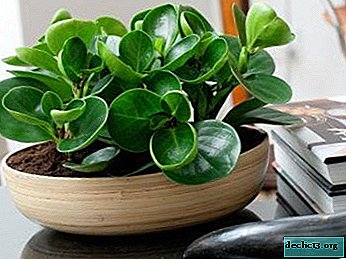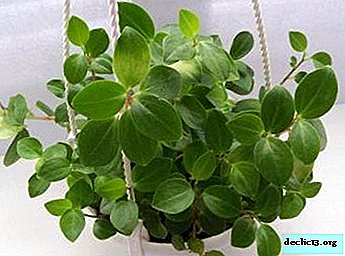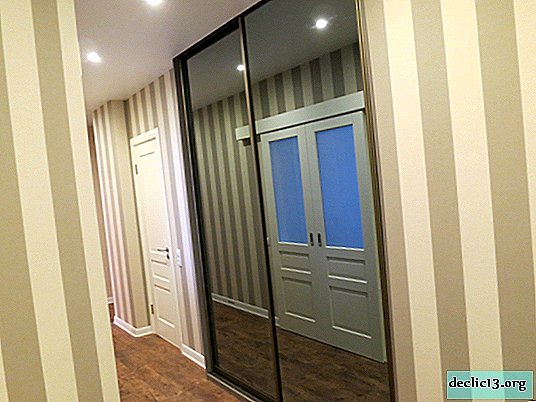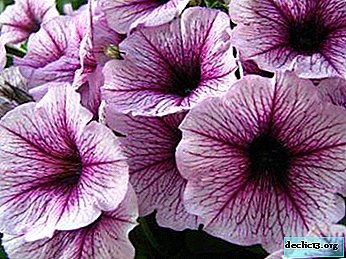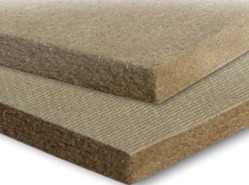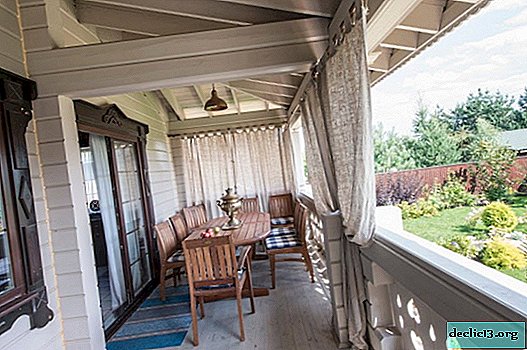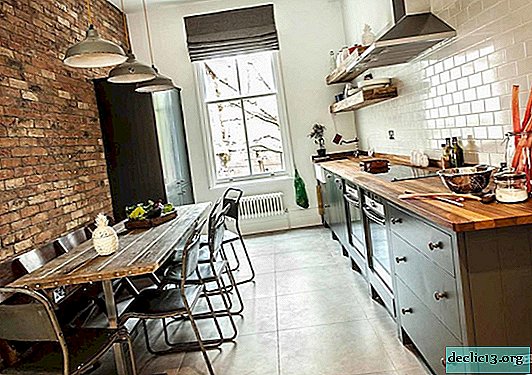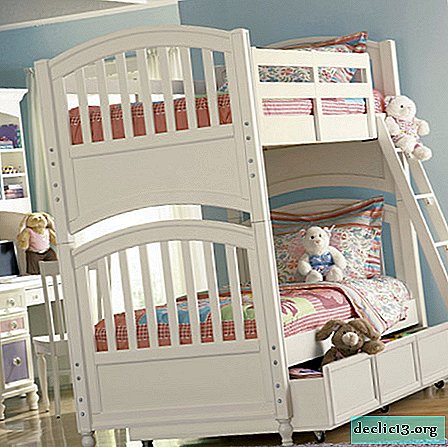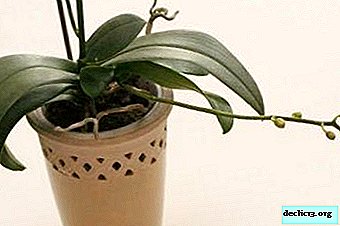Features of care for ampelous petunia, as well as photos of the varieties of this flower
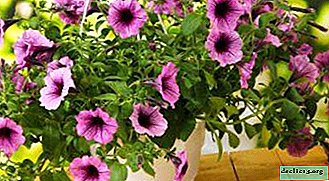
When everything around is blooming with bright colors, I really want our garden, balcony or cottage to be so beautiful and bright. To do this, it is only worth decorating the territory with a beautiful blooming beauty ampelous petunia.
In this article we will talk about the basic requirements of petunia to the soil, how to properly care for it and what common flower diseases you may encounter.
Botanical Description and History
What it is? Petunia is one of the most popular and sought after summer plants.. It is characterized by long flowering, a variety of colors, aroma and variety. Perennial plant, but grown exclusively as an annual. Inhabitant of flower beds, flower beds, vases, balconies. Ideal for hanging drawers and flowerpots. This plant will always delight you with bright fragrant cascades of flowers. We wrote more about growing petunias in open ground and decorating beautiful flowerbeds here, and in this article you will find recommendations for growing ampelous petunias in a cache-pot.
This plant originates from the tropical regions of South America. It grows in Paraguay, Bolivia, Argentina and Uruguay. There are from 15 to 40 species.
More than a hundred years ago, hybrids appeared that are grown as garden or balcony ornamental plants. Very popular among flowers for its beautiful and vibrant colors.
Names of varieties and photos
In addition to the classic varieties, there are many hybrids. All varieties can be divided into classes. There are five of the most popular of them:
- Bush petunias.
- Ampelic.
- Cascading (about how ampelous petunia differs from cascading petunia, read here).
- Petunias of Calibrachoa.
- Petunias of Floribunda.
Opera
This hybrid is bred by Japanese breeders. A distinctive feature is the unpretentiousness of the duration of daylight hours. It is thanks to this that the plant washes perfectly to decorate a house or apartment in winter conditions.
Unpretentious to growing conditions and does not require constant care. She will need enough regular watering and pruning for the beauty of the plant. It looks best in the form of an ampelous culture, but can also be used as a cover plant. The buds are relatively small and do not have terry.
This grade requires a large amount of soil (per 1 seedling of at least 8 liters). Otherwise, the plant will develop poorly.

For a more detailed description, photos and rules for the care of Opera petunia, read here.
Shallow
This plant tolerates low temperatures well., do not lose their decorative appearance after rain, bloom early. They bloom very abundantly and form a continuous carpet.
Flowers can be double and non-double. Petunia with double flowers bloom a little weaker than non-double. Resistant to bad weather. Perfectly decorate your garden and balcony.
Below you can see representatives of the best varieties of plants.

We wrote in more detail about the varieties of small petunia and the features of its cultivation in a separate article.
Growing
Reference! They are grown from seeds of good quality, better than a foreign producer. This plant variety prefers sandy, loamy soil, and for better flowering, nutritious, loose soil is needed.To properly sow the seeds you need:
- Prepare the container.
- Ignite the ground.
- Pour the soil into the container and pour potassium permanganate solution.
- Dry the earth.
- Spread the seeds on the surface of the soil, do not sprinkle on top.
- Cover the container with glass or film and place in a dark, warm place.
- After emergence, you can remove the cover and rearrange the containers in a well-lit place.
- Water regularly as the soil dries.
- When feeding with mineral fertilizers.
- Transplant when there is no threat of frost.
The following is a visual video on how to sow the seeds of ampelous petunia:
Seat selection
When choosing a place, remember - the plant loves light. The south side will do. The plot should be open and not shaded.
Important! In case of insufficient lighting in the room, organize additional lighting with fluorescent lamps. Daylight hours up to 14-20 hours.Soil requirements
A loose and nutritious soil with a sufficient level of moisture capacity is needed.. Suitable sandy, loamy and loamy soil.
Before planting, it is advisable to add leaf humus. Do not use fresh organics - it leads to fungal diseases.
How to care?
Watering and feeding
 The most important thing is a sufficient amount of water when watering. Increase as the plant grows. It is important to prevent drying out. On hot days, water at least 2 times a day: morning and evening. Plants growing in flower pots are generally best periodically placed with the pot in water. But don't overdo it. Excess moisture is detrimental to the plant. It is important not to miss the moment when the moisture has evaporated, but the soil has not yet dried out.
The most important thing is a sufficient amount of water when watering. Increase as the plant grows. It is important to prevent drying out. On hot days, water at least 2 times a day: morning and evening. Plants growing in flower pots are generally best periodically placed with the pot in water. But don't overdo it. Excess moisture is detrimental to the plant. It is important not to miss the moment when the moisture has evaporated, but the soil has not yet dried out.
Top dressing should be once a week. Use potash and phosphorus fertilizers. When planting, top dressing should be intense, then it must be reduced.
Scheme of watering and top dressing - in the morning to water the soil, in the evening to make top dressing.
The following is a visual video on how best to water the petunia:
Soil care
Water carefully, under the root itself, so as not to harm the flowers. Not the next day weed the soil, loosen and remove weeds. Make sure that the soil does not stray into hard bark.
Pruning
To preserve the appearance of the plant, you need to carry out the procedure of forming a bush. To do this, cut off about two-thirds of the shoot. Ampelic petunia is precisely cut off. A pinch is not needed.
Attention! Pruning is carried out in several steps, trimming 2-3 branches with an interval of a week.Topping
Essential for furry and flowering flowers. To pinch, remove the tip of the shoot, especially if he is very stretched. Together with it, remove faded buds, especially with seed boxes.
Common Diseases and Pests
- Blackleg - the stalk becomes black and watery. The reason is excessive watering and a dense landing. The disease spreads rapidly. The flowers turn pale and the leg collapses. It is necessary to treat the flower with a special preparation.
 Gray rot - the leaves are covered with a gray coating, which further begins to rot. The reason is low temperature, lack of light, excessive watering, dense landing. To treat with biological products and chemical preparations. Treatment is effective only at an early stage.
Gray rot - the leaves are covered with a gray coating, which further begins to rot. The reason is low temperature, lack of light, excessive watering, dense landing. To treat with biological products and chemical preparations. Treatment is effective only at an early stage.- Brown spotting - spots on the leaves that lead to wilting. Occurs due to high humidity and mechanical damage. It is necessary to spray with copper-containing drugs.
Propagation Features
Seeds
Seeds must be fresh and of high quality.. Do not collect them yourself.
- Purchased seeds are planted in well-moistened nutrient soil. Seeds do not sprinkle on top.
- Cover with glass or film and put on adequate lighting. Temperature 22-24 ° C. Humidity 95-98%.
- With the first sprout take cover.
- Spray and lower the temperature every day during the day to 18-20 ° C, at night - 14-16 ° C.
- After a month, dive into the ground.
Do not forget about watering seedlings. Before planting in open ground, it is necessary to harden the plant (lower the temperature to 10 ° C).
Cuttings
Additional illumination and temperature of 15-22 ° C are necessary.
- Cuttings are planted in peat tablets or containers with suitable soil mix.
- Cuttings are cut at an angle so that there are 4-6 leaves on the planting material, the length is not more than 10 cm.The distance between the cuttings when planting is at least 1.5 cm.
- Cover the seedlings with glass or film, at least 21 ° C and plenty of light.
- After 5-10 days, the roots of the cuttings will appear.
- Look after them the same way as with seedlings.
The following is a video with an illustrative example of how ampelous petunias are cutted:
More information about growing plants from seeds and cuttings, as well as about their subsequent care, can be found here.
Possible problems
- Defeat due to inappropriate climate.
- Insufficient watering during hot weather.
- Rain damage for decorative petunias.
- Features of watering.
Petunias have a unique ability to adapt to different growing conditions. Therefore, she became the favorite of flower growers. But we must help the plant, creating favorable conditions for it. And then it will thank us with a beautiful flowering.

 Gray rot - the leaves are covered with a gray coating, which further begins to rot. The reason is low temperature, lack of light, excessive watering, dense landing. To treat with biological products and chemical preparations. Treatment is effective only at an early stage.
Gray rot - the leaves are covered with a gray coating, which further begins to rot. The reason is low temperature, lack of light, excessive watering, dense landing. To treat with biological products and chemical preparations. Treatment is effective only at an early stage.